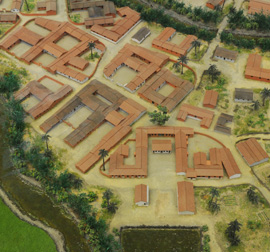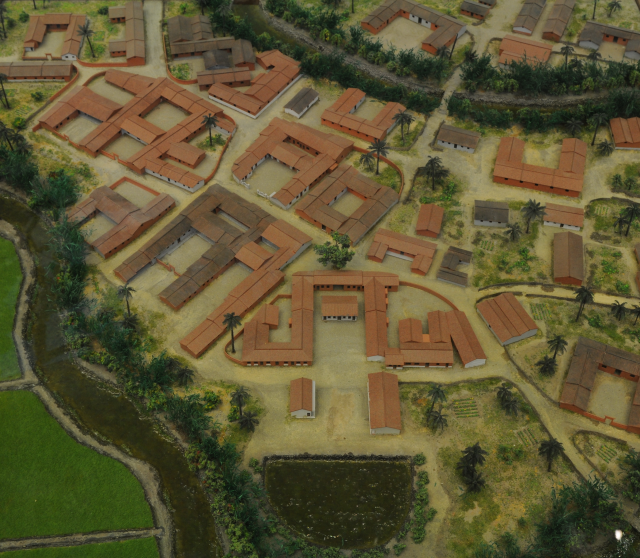:::
Wugoshui Settlement
Wugoshui Settlement is a Hakka village inside Wanluan Township, Pingtung County. It is bordered in the east by two plains indigenous villages, called Chihshan and Wanjin, in the north by Chengde Village, and in the west by Wanluan and Jiazuo. The order of land reclamation was Tougou, Ergou, Sangou, and Sigou, then following the river upstream to Wugou. This is how the name Wugoshui was derived.
When the settlers moved to Taiwan, they kept alive many of their traditional Hakka customs, such as a focus on agriculture, education and a strong sense of social cohesion. There are still many characteristic Hakka residences on either side of the old street in Wugou, known as Xisheng Road, as well as by the winding canal. The majority of the Hakka residences in the village have preserved their traditional forms.
This model attempts to re-create the village during the Qing Dynasty, so that visitors can catch a glimpse of how it looked at the time. A map of Taiwan produced during the Qianlong period documented the Wugoshui Settlement. During the development of the Donggang River basin in the early Qing Dynasty, the buildings in the settlement were mostly constructed next to the water, forming a landscape surrounded by canals. This illustrates that the rural villages of during the Qing Dynasty developed alongside water resources.









